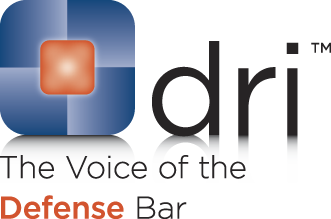Avoid the Allegation That You Have Protected One Insured to the Detriment of Another
Every day, insurance adjusters see claims where the insured has not purchased enough liability insurance to cover the loss. In many instances, the injured party will accept payment of the policy limit and release the claim, even though he has not been fully compensated. There are other times where the plaintiff won’t accept the policy limit and will try to recover the excess value of the claim by filing suit and trying to get a judgment against the insured.
Sometimes there is only one insufficient policy limit available to protect more than one insured. For example, a permissive driver and a family member may be liable for the same negligent loss. Often the injured party will treat the two insureds the same way, either release them both or pursue them both for the excess. A less common but a much more complicated situation arises when the injured party offers to release one of the two insureds in exchange for payment of the policy limit. This newsletter will examine the conflicts that can arise and the safest way for a carrier to handle this “no win” situation.
I. “No Win” Scenario One: Refusing to Protect One Insured May Cause the Carrier to be Liable for the Excess
Nevada has sparse case law involving many coverage issues. This is a situation where there is no controlling Nevada precedent.
When facing an unexplored coverage issue like this, a good method of analysis is to look for statutes and case precedents that might impact the situation.
Facing this “no win” situation, an insurance company can accept the policy limit offer and protect one of its insureds, or alternatively, it can refuse the offer of partial settlement. If the carrier refuses to accept the settlement, generally, the Plaintiff will be motivated to move forward toward litigation and judgment against both insureds. Under this situation, with the value of the claim in excess of the policy limit, the judgment that will be obtained will be in excess of the policy limit.
Even before the excess judgment is entered, the insured that could have been protected will argue that he should have been protected and that the carrier should be liable for the excess.
In Nevada, there is precedent to support this position. In the case of DeJesus v. Flick, 7 P.3d 459, 116 Nev. 812 (2000) the Nevada Supreme Court has said that where a carrier has the opportunity to settle within the policy limit and fails to do so, the carrier can be made to pay the amount of the judgment in excess of the policy limit. The Court said in footnote 1:
By refusing to pay the policy limits, the risk of an excess verdict is transferred to the insurance company. See, Green v. J.C. Penney Auto Ins. Co., 806 F.2d 759, 763-64 (7th Cir. 1986); 46A C.J.S. Insurance § 1584 (1993).
Thus, there is a serious “down side” where a carrier has refused to settle within policy limits and such a settlement was available.
II. “No Win” Scenario Two: Settling and Obtaining a Release for One Insured Invites Allegations from the Other Insured of Favoritism
In light of the adverse consequences that can happen under scenario one, a carrier might be tempted to pay the policy limit and accept a release to protect the insured that can be protected. However, this choice invites what may be an equally adverse response. Again, the response would probably not arise until after the judgment is entered in excess of the available coverage. The unprotected insured would then step forward to argue that had the carrier not played favorites, he too could have been protected by payment from the carrier for the policy limit. And there is support for that position.
In the case of Smoral v Hanover Ins. Co., 322 N.Y S.2d 12 (1971) the New York Court said that by paying the policy limit in exchange for a release that protected only one insured constitutes the insurance company playing favorites. The Smoral opinion dictates that a carrier commits bad faith per se if it settles and obtains a release that protects one insured and not all of the insureds. Thus, if the carrier opted to settle with only one, the insured would have support to argue that the insurance company’s decision to accept a release of one insured amounts to bad faith.
Even though there is case law from other jurisdictions to the contrary, that fact alone does not resolve the problem. Because Nevada District Courts are generally unwilling to grant a summary judgment and because there is no precedent from the Nevada Supreme Court to resolve this issue, chances are that if the injured insured wants to fight, the court will allow him to take his case through the expensive process of discovery and trial.
This office recently handled a case raising these very issues through the District and Supreme Court, with a decision that ultimately granted relief to the carrier. However, the resolution did not provide a published opinion that can be relied on as precedent. Based upon our experience, I would expect the courts to handle disputes like this the same way it handled the case we just finished, namely the court would force the carrier to endure expensive discovery and trial to get a resolution. Here is my recommend solution to avoid a problem like this in the future.
III. Until Nevada Law is Settled, Seeking Approval from the Court to Settle on Behalf of One Insured is the Most Reasonable Option
As is true in all litigation strategy decisions, there is no guaranteed result in the resolution of coverage disputes. Therefore, a carrier should be examining the costs and benefits in how a particular situation should be handled. However, the best course of action in this scenario seems to be rather clear. The only real hope of avoiding the costly consequences involved in this situation is to obtain court direction and approval on how to proceed.
This proactive response will provide at least two benefits. First, if the carrier’s actions are questioned in the future, it will give the carrier a foundation to support its argument that it acted with oversight and approval. Second, by naming both insureds in the coverage action, the carrier will acquire support for an argument that any “bad faith” claim of either insured was a compulsory counterclaim. In other words, if either insured were to bring a bad faith action in the future, the carrier would say that the bad faith suit should be dismissed because that insured failed to bring it in a counterclaim to the coverage suit.
As usual, the best vehicle to support the coverage suit is a declaratory relief action. The purpose of a declaratory relief action is to have the court declare the rights and duties of the parties to a particular transaction. The carrier will want to name as parties the Plaintiff and both insureds.
Bringing a coverage case may seem redundant to the underlying case. However, there are several reasons why this dispute cannot be resolved as part of the underlying action. First, the court in the underlying case is not in a position to take sides between the parties as to who can settle and who cannot settle. Just like the carrier, the judge cannot appear to be taking sides without subjecting himself to criticism and possible censure. Second, the carrier is not a party in the underlying action. Therefore, the benefits the carrier envisions by seeking court approval will not be realized until it becomes a named party, i.e. the Plaintiff in a coverage action relative to the settlement of this dispute.
In moving forward with this coverage action, the carrier might assume a “hands off” approach, asking the court to provide its solution to this dispute. However, I believe that the better strategy is for the carrier to suggest the course of action that it thinks is the better solution. And frankly, the better solution is for the carrier is to get the court’s approval to pay the policy limit and take a release for the insured that the Plaintiff will release. If a precedent like that were established, it would encourage early settlement for one insured and save the carrier the cost and worry of having two insureds with two separate interests still at risk in the litigation. There are opinions from other jurisdictions that support this outcome. See, Nationwide Ins. Co. v. Hunley, 915 F.2d 557 (9th Cir.1990); Pekin Ins. Co. v. Home Ins. Co., 479 N.E.2d 1078 (Ill.App. 1985) and Millers Mutual Insurance Assoc. of Ill. v. Shell Oil Co., 959 S.W.2d 864 (Mo. App. 1997) Furthermore, Nevada law is consistent with the law of those jurisdictions. Therefore, this result seems to make the most sense.
IV. Conclusion
The cost of being the proponent of a coverage lawsuit is not a burden that a carrier shoulders lightly. However, the benefits of bringing a suit in a situation like this far outweigh the costs. Without court oversight, whichever course of action the carrier follows, there is a risk that one or both insureds will face a judgment in excess of the policy coverage. The greater the excess, the greater the motivation to pursue a bad faith suit to recover not only the excess but also additional damages for the bad faith.
The declaratory relief action is an attempt to cut off a later bad faith suit that is virtually guaranteed otherwise. Stepping into this fray early, while the full extent of the impact to the insureds is still not fully realized, is the best way to address what is an otherwise “no win” situation for the carrier. Until Nevada law becomes clearer, the better option is to get the court to sanction any settlement proposed by the carrier.
If you have any questions about this or any other coverage related issues, please feel free to call Mr. Mills at (702) 240-6060. He can also be reached by email.
 Follow
Follow Email
Email


